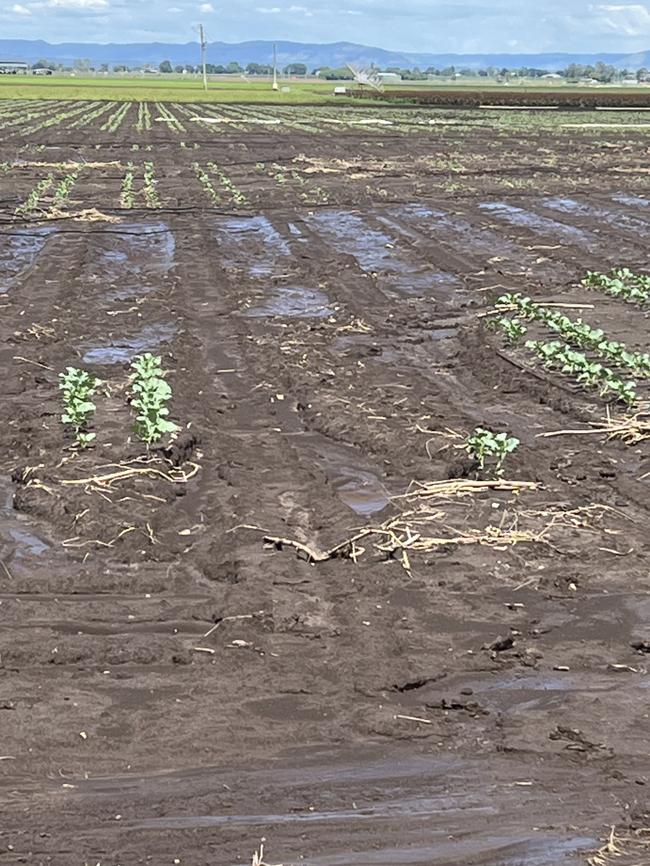Lockyer Valley farmers battle the land one month on from ferocious floods
South East Queensland farmers continue to battle the fallout of February and March’s deadly floods, with job losses, financial stress and product price spikes to continue. Details here.
Toowoomba
Don't miss out on the headlines from Toowoomba. Followed categories will be added to My News.
Vegetable prices could rise across the district, after the devastating February and March floods left farmers and growers struggling to meet deadlines and harvest quality produce.
Nathan Gehrke, the CEO of Campsey Ash Farms at Lake Clarendon, said his property was inundated when floodwaters along Lockyer Creek rose at the end of February, where the region reported more than 500mm of rainfall.
“We have had a lot of erosion and top soil taken from one of our properties, and damage to irrigation systems and pumps,” he said.
“We are looking positive for the rest of the year because our bores on the Lockyer Creek have been filled.
“However, we have lost five weeks of production from our spring onion program.”

While Mr Gehrke didn’t want to speculate on the exact cost of vegetables, he hoped the Victorian agriculture industry would help fill the Sunshine State’s shortfalls in the coming months.
While Mr Gehrke waited for a break in the rain, which he hoped would enable him to return to the land this weekend, he said the five weeks of unemployment between May and June would put pressure on his 150 casual staff.
“Farming is all about being resilient so we are used to facing issues like this,” he said.
“I feel sorry for a lot of my casual staff as they will have no job in this five-week period of no spring onions on my property and this will contribute to higher prices for vegetables in the next few months.”

Lockyer Valley Growers Association president Michael Sippel said while the current situation was not “diabolic”, it did present problems for the region and the morale for many farmers was low.
“When you have a flood disaster as bad as we had, there’s a lot of cost recovery, so you’re looking at getting some money back, start paying for damages and lost earnings,” he said.
“But when you can’t get out on the farm, and you’ve got workers that you’re paying for and you can’t get them doing anything, then you need to play catch up and it’s not easy.
“When you get the rain we’ve had again, the water lays in low areas on farms after the water washed away the top soil, so it creates dams and it takes a long time to dry out, especially on black soil.”
Mr Sippel said many in the region held concerns for the coming months and the implications that would have on production and harvest.
“If we get a wet winter … that spells a lot of trouble for us because you can’t get on and get the ground worked, you can’t get plants in the ground,” he said.
“It causes a lot of headaches.
“We’ve got growers here that are getting close to harvest, so they don't want anymore rain.
“People think rain is good for farmers, and it certainly is when you’re in a drought, but we’ve had enough rain and we want a bit of sunshine so we can get back to normal.”
More Coverage
Originally published as Lockyer Valley farmers battle the land one month on from ferocious floods




